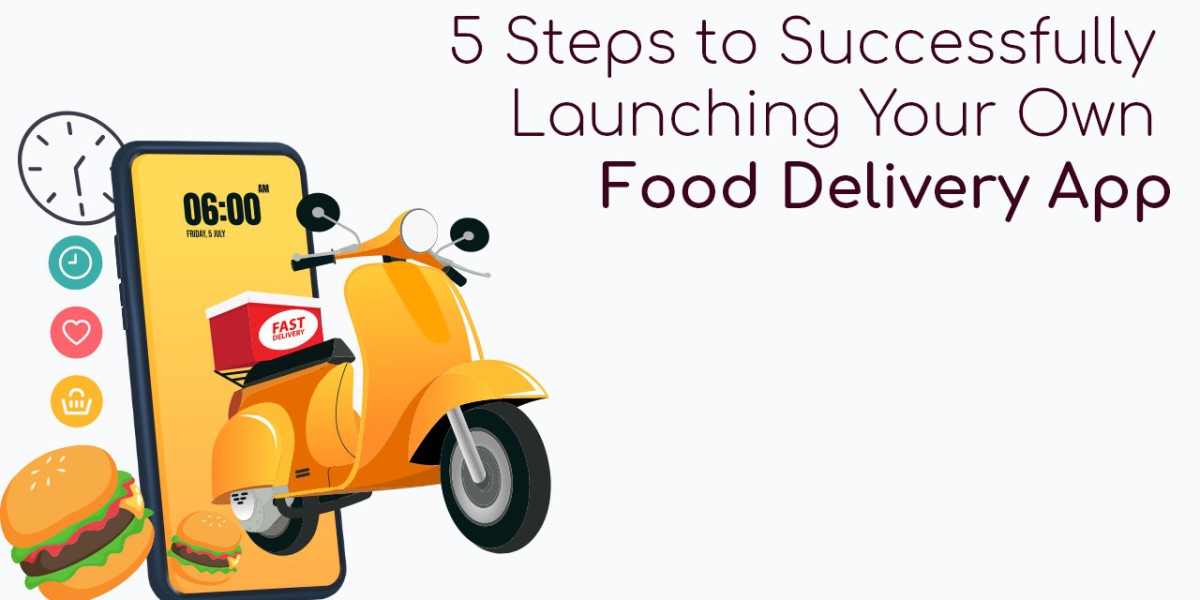Launching a food delivery app can be a lucrative venture in today’s digital age, where convenience and quick service are highly valued by consumers. However, to ensure success, careful planning and execution are essential. This guide will walk you through five critical steps to successfully launch your own online food delivery script app, from initial research to post-launch strategies.
Step 1 - Conduct Thorough Market Research
Identify Your Target Market
Understanding your target market is the first and most crucial step. Determine who your potential customers are, their dining preferences, and their pain points. Are they busy professionals, college students, or families? Knowing your audience will help you tailor your app to meet their needs effectively.
Analyze Competitors
Study the existing food delivery apps in your area. Identify their strengths and weaknesses, and look for gaps that your app can fill. Analyze customer reviews and feedback to understand what users like and dislike about these apps. This information will help you position your app uniquely in the market.
Assess Market Trends
Stay updated with the latest trends in the food delivery industry. Technological advancements, changes in consumer behavior, and emerging food trends can all impact your app’s success. Understanding these trends will help you stay ahead of the competition and meet evolving customer expectations.
Step 2 - Plan Your App's Features and Functionality
Define Core Features
List down the essential features your food delivery app should have. These may include user registration, restaurant listings, menu browsing, order placement, payment gateway integration, real-time tracking, and customer support. Ensure that these features are user-friendly and intuitive.
Consider Advanced Features
Think about additional features that can set your app apart from the competition. This could include push notifications, loyalty programs, referral bonuses, and social media integration. Advanced features can enhance the user experience and encourage customer loyalty.
Create Wireframes and Prototypes
Before development begins, create wireframes and prototypes of your app. These visual representations will help you and your development team understand the app’s layout, design, and functionality. Use tools like Sketch, Figma, or Adobe XD to create detailed prototypes.
Step 3 - Choose the Right Technology Stack
Select the Development Platform
Decide whether you want to develop a native app for iOS and Android or opt for a cross-platform solution. Native apps offer better performance and user experience but are more time-consuming and expensive to develop. Cross-platform frameworks like React Native and Flutter can provide a cost-effective and efficient alternative.
Backend Development
Choose a robust backend technology to handle your app’s data processing, storage, and server management. Popular backend technologies include Node.js, Django, and Ruby on Rails. Ensure that your backend can scale efficiently as your user base grows.
Integrate Essential APIs
Integrate necessary APIs to enhance your app’s functionality. This may include payment gateways (like Stripe or PayPal), real-time tracking (using Google Maps API), and communication tools (such as Twilio for SMS notifications). Ensure these integrations are seamless and secure.
Step 4 - Partner with Restaurants and Set Up Delivery Logistics
Build a Network of Restaurants
Establish partnerships with a variety of local restaurants and eateries. Highlight the benefits of joining your platform, such as increased visibility, a larger customer base, and streamlined order management. Offer competitive commission rates to attract more partners.
Onboard and Train Restaurant Partners
Provide comprehensive onboarding and training sessions for your restaurant partners. Ensure they understand how to use your platform, manage orders, and update their menus. A smooth onboarding process leads to better collaboration and service quality.
Hire and Train Delivery Personnel
Recruit reliable and professional delivery personnel. Conducted background checks and provided training on customer service, navigation, and app usage. Ensure your delivery team is well-equipped to handle orders efficiently.
Optimize Delivery Routes
Use advanced algorithms to optimize delivery routes, minimizing travel time and fuel consumption. Real-time traffic data and GPS technology can help delivery drivers avoid congestion and take the fastest routes.
Step 5 - Develop and Execute a Marketing Strategy
Pre-Launch Marketing
Generate buzz for your app before the official launch. Use social media, email marketing, and influencer partnerships to create anticipation. Offer early-bird discounts or exclusive access to attract initial users.
Launch Day Strategies
Plan a strong launch day strategy to maximize visibility and downloads. Collaborate with local influencers, run promotional campaigns, and engage with your audience on social media. Ensure your app is ready for a smooth launch without technical glitches.
Post-Launch Marketing
Continue your marketing efforts post-launch to maintain momentum. Use a mix of digital marketing strategies, including content marketing, social media advertising, and search engine optimization (SEO). Regularly update your app with new features and improvements to keep users engaged.
Gather and Utilize Customer Feedback
Encourage users to rate their experience and provide feedback. Regularly analyze this feedback to identify areas for enhancement and implement changes accordingly. A responsive approach to customer feedback can significantly improve user satisfaction and loyalty.
Conclusion
Launching a food delivery app requires careful planning, execution, and continuous improvement. By conducting thorough market research, planning your app’s features and functionality, choosing the right technology stack, partnering with restaurants, setting up efficient delivery logistics, and developing a comprehensive marketing strategy, you can create a successful food delivery app script that meets the needs of modern consumers. Stay adaptable, listen to your users, and continuously refine your app to achieve long-term success. With dedication and the right approach, your food delivery app can thrive in the competitive market and deliver exceptional value to both customers and partners.



